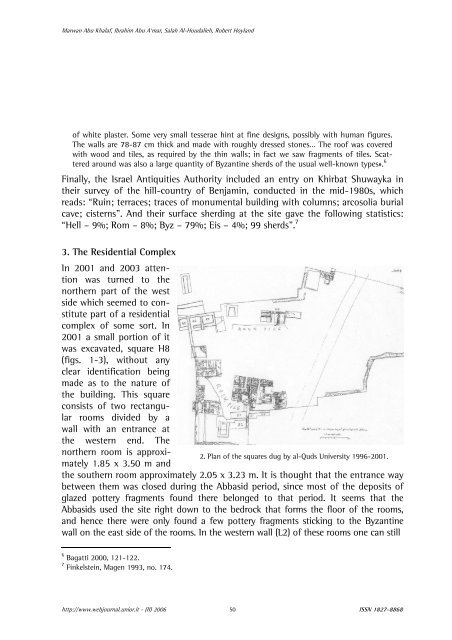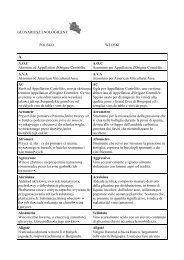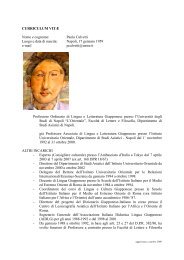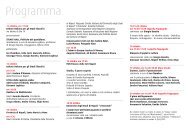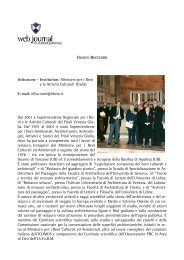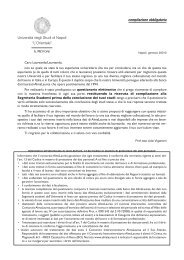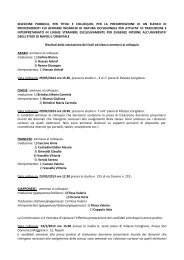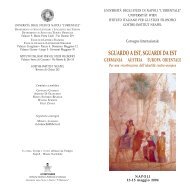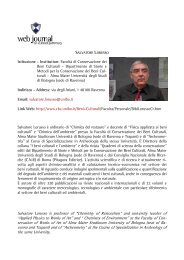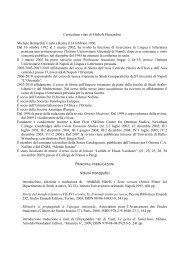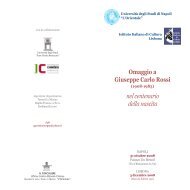The Byzantine and Early Islamic settlement of Khirbat ... - web journal
The Byzantine and Early Islamic settlement of Khirbat ... - web journal
The Byzantine and Early Islamic settlement of Khirbat ... - web journal
Create successful ePaper yourself
Turn your PDF publications into a flip-book with our unique Google optimized e-Paper software.
Marwan Abu Khalaf, Ibrahim Abu A‘mar, Salah Al-Houdalieh, Robert Hoyl<strong>and</strong><strong>of</strong> white plaster. Some very small tesserae hint at fine designs, possibly with human figures.<strong>The</strong> walls are 78-87 cm thick <strong>and</strong> made with roughly dressed stones… <strong>The</strong> ro<strong>of</strong> was coveredwith wood <strong>and</strong> tiles, as required by the thin walls; in fact we saw fragments <strong>of</strong> tiles. Scatteredaround was also a large quantity <strong>of</strong> <strong>Byzantine</strong> sherds <strong>of</strong> the usual well-known types». 6Finally, the Israel Antiquities Authority included an entry on <strong>Khirbat</strong> Shuwayka intheir survey <strong>of</strong> the hill-country <strong>of</strong> Benjamin, conducted in the mid-1980s, whichreads: “Ruin; terraces; traces <strong>of</strong> monumental building with columns; arcosolia burialcave; cisterns”. And their surface sherding at the site gave the following statistics:“Hell – 9%; Rom – 8%; Byz – 79%; Eis – 4%; 99 sherds”. 73. <strong>The</strong> Residential ComplexIn 2001 <strong>and</strong> 2003 attentionwas turned to thenorthern part <strong>of</strong> the westside which seemed to constitutepart <strong>of</strong> a residentialcomplex <strong>of</strong> some sort. In2001 a small portion <strong>of</strong> itwas excavated, square H8(figs. 1-3), without anyclear identification beingmade as to the nature <strong>of</strong>the building. This squareconsists <strong>of</strong> two rectangularrooms divided by awall with an entrance atthe western end. <strong>The</strong>northern room is approximately1.85 x 3.50 m <strong>and</strong>2. Plan <strong>of</strong> the squares dug by al-Quds University 1996-2001.the southern room approximately 2.05 x 3.23 m. It is thought that the entrance waybetween them was closed during the Abbasid period, since most <strong>of</strong> the deposits <strong>of</strong>glazed pottery fragments found there belonged to that period. It seems that theAbbasids used the site right down to the bedrock that forms the floor <strong>of</strong> the rooms,<strong>and</strong> hence there were only found a few pottery fragments sticking to the <strong>Byzantine</strong>wall on the east side <strong>of</strong> the rooms. In the western wall (L2) <strong>of</strong> these rooms one can still6 Bagatti 2000, 121-122.7 Finkelstein, Magen 1993, no. 174.http://www.<strong>web</strong><strong>journal</strong>.unior.it - (II) 2006 50ISSN 1827-8868


